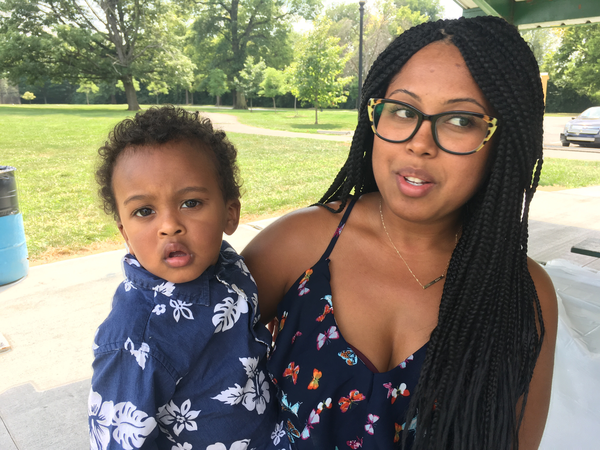Butterfly Latest
Cultural, Economic, Historical Factors Drive Black Breast-Feeding Gap
Tahwii Spicer gave birth to her son Reece almost two years ago at home with the help of a midwife. She said almost as soon as he was born, he “army-crawled” up her body to start feeding.
“He was so ravenous!” she said. “He was hungry.”
Despite her positive experience, Spicer, who lives in Indianapolis, said examples of breast-feeding are sometimes hard to find in the Black community. “Some of us don’t have a lot of support, and we don’t necessarily see it in our own families,” she said. “We might not even have been breast-fed ourselves.”
Breast-feeding rates are increasing each year, but a gaping disparity between Black women and women of other races remains. Nationally, according to recent federal data, there is an 18 percent gap between white and black mothers who have ever breast-fed. In Indiana, there was a 14 percent gap between Black mothers who were breast-feeding when they left the hospital after delivery and white mothers, according to 2015 data from the Indiana State Department of Health.
Research highlights racial gap
Research suggests a strong correlation between breast-feeding and lower rates of certain diseases and mortality for both infants and mothers, said Melissa Bartick, an assistant professor at Harvard Medical School who studies racial disparities in breast-feeding.
“A lot of pediatric infectious disease, gastroenteritis, ear infections, that [evidence] is very, very strong,” she said.
Bartick said such infections are often associated with premature and low birth weight babies, which occur at a higher rate in Black women than in other races.
Other statistics indicate a connection between breast-feeding and a lower rate of sudden unexpected infant deaths (SUIDs), in which an infant dies inexplicably before his or her first birthday. SUIDs are increasing in Indiana. In 2014, 240 African-American babies per every 100,000 died from SUIDs, a 60 percent increase over the year before, according to state figures.
“A lot of people aren’t aware that Black babies are dying,” said Rosalind Jones-Jackson of the Indiana Black Breast Feeding Coalition (IBBC), which advocates for and educates families about breast-feeding. She agrees with Spicer that in many cases, the cultural framework to support breast-feeding just doesn’t exist.
“I think it’s because now we don’t have mentors and nobody ever talked about the importance of breast-feeding in the African-American population,” Jones-Jackson said.
Black families in many cases didn’t embrace the shift back to breast-feeding after formula feeding began to fall out of favor, she added.
A troubled history
Bartick said for many families, the concept of breast-feeding is loaded with baggage related to slavery. Slave owners would force women to act as wet nurses for their sons and daughters, often at the expense of their own young children, she said. That…
Please read original article- Cultural, Economic, Historical Factors Drive Black Breast-Feeding Gap


















